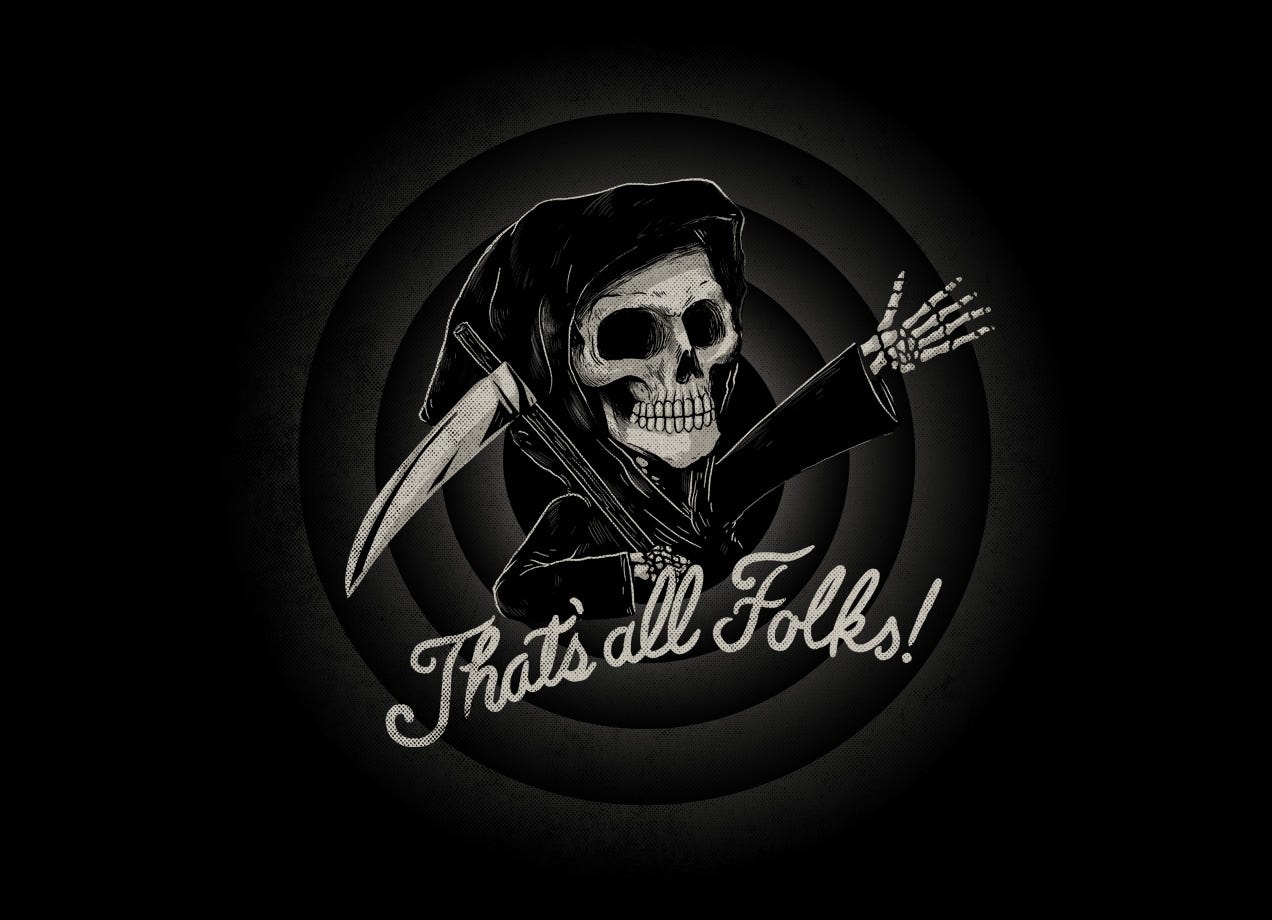
“The taste of the roast is often determined by the handshake of the host.” — Benjamin Franklin
The Internet and resulting E-commerce has changed retail forever, no surprise there.
What is surprising and incomprehensible is that we have known this would happen of such a long time and even still so many traditional retailers have been slow to adapt, to change mindsets and to evolve to the shifting patterns of people and technology.
It is not that it is easier to progress from digital savoir faire to physical savoir faire or clicks to bricks, like we see Amazon currently doing. You can put a shape on these patterns and you can put a framework around such disruption to see what is coming and how to best react to these changes. This is why I joined Katawave, this is what we do and it was a skill I did not have.
Let us now look at the increasing demise of retail and rise of Amazon in a different way. As the title suggests, this is a ‘Black Friday’ for Amazon (they traditionally announce earnings and acquisitions such as Wholefoods on a Friday and murder other retailers on the event known as Black Friday) and a “Bleak Friday” for everyone else.
We see several forces at work in the rise of Amazon (clicks to bricks) over traditional retail (bricks to clicks). Rather than traditional retail taking the “Ostrich” reaction to retail, it is more that Amazon are ahead of consumer needs or ahead of the “S” Curve.
For regular readers of the Thursday Thought blog you be familiar with S curve growth and how smart companies consistently jump their S curve.
Amazon is a company who exemplifies a disruptive mindset. What Bezos calls staying in day 1 is the disruptive leadership mindset of a constant jump to the next S curve. This is a never-ending jump.
Briefly, let’s look at traditional retail versus Amazon through S curves.
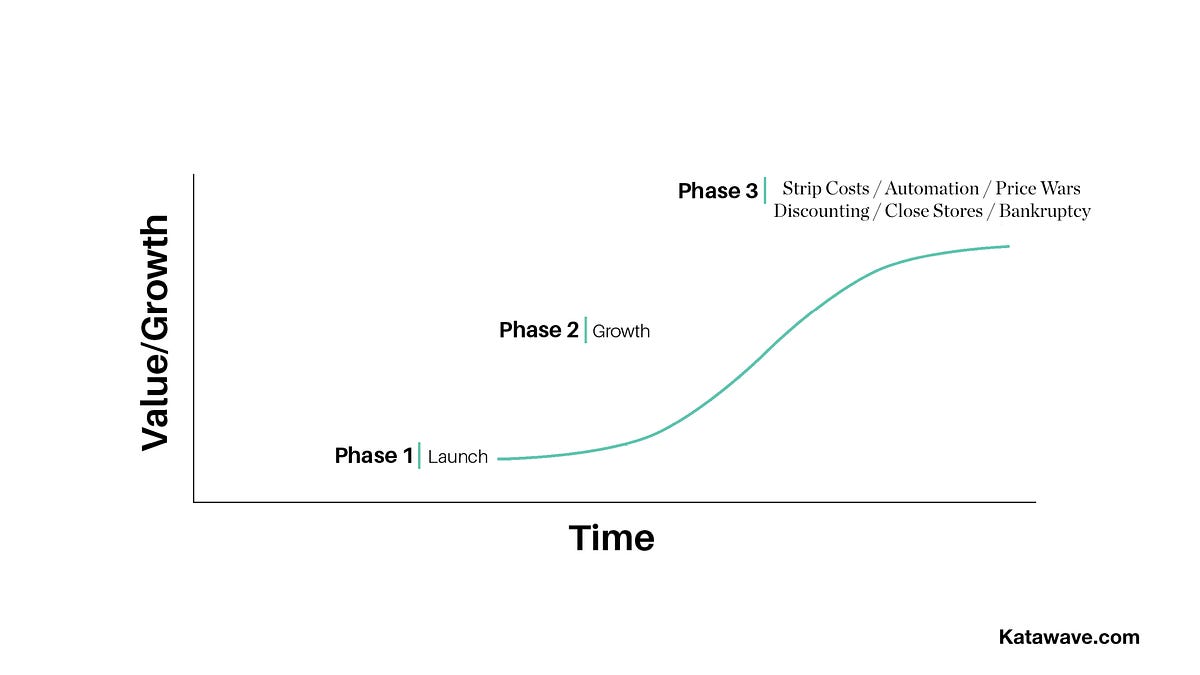
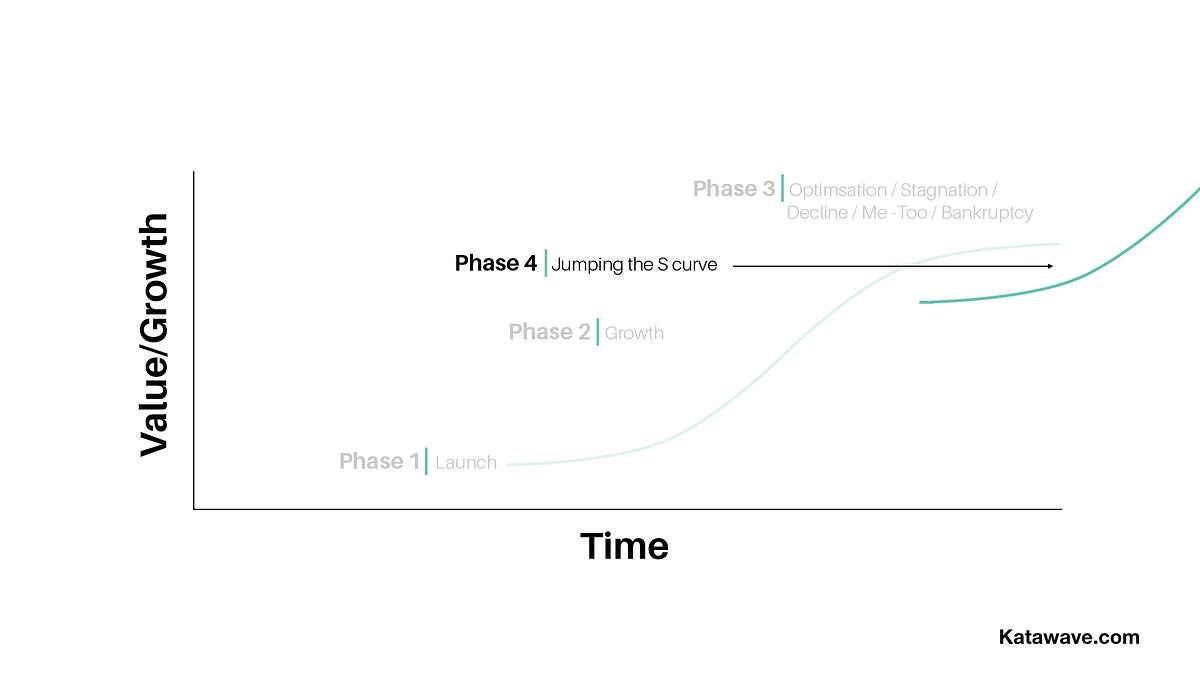
As you can see, because traditional retail dominated for so long and customers lacked a more ideal version of the shopping experience they had no choice. Amazon provided that choice. While retailers saw their competition as other retailers and fought the battle at the top of the S curve with price wars, me-too propositions and advertising Amazon grew steadily, receiving a fair share of negative press including one article entitled “Amazon dot Bomb”. Well, Amazon has exploded, but in the positive way. For retailers, just like we covered previously with Blockbuster viewing Netflix, Amazon looked like a backward step. This is the biggest challenge to disruption, to innovation, to progress.
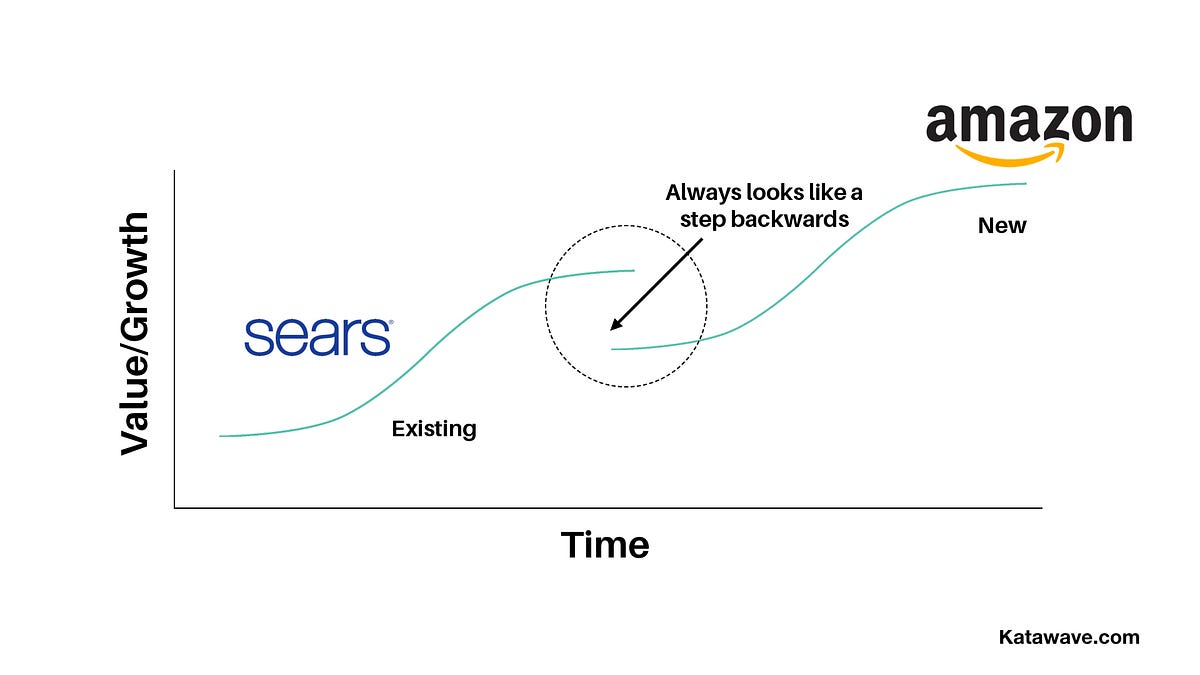
Staying in Day 1
“Staying in Day 1 requires you to experiment patiently, accept failures, plant seeds, protect saplings, and double down when you see customer delight. A customer-obsessed culture best creates the conditions where all of that can happen.”
In the context of S curves Bezos is referring to maintaining the mindset of an S curve jump. More importantly, he is referring to the avoidance of the plateau stage, where companies usually reside for some time before eventual bankruptcy or acquisition by a more strategic company.
Bezos refers to the “top of the S” stage as Day 2. Here is how he describes Day 2: “Day 2 is stasis. Followed by irrelevance. Followed by excruciating, painful decline. Followed by death.”
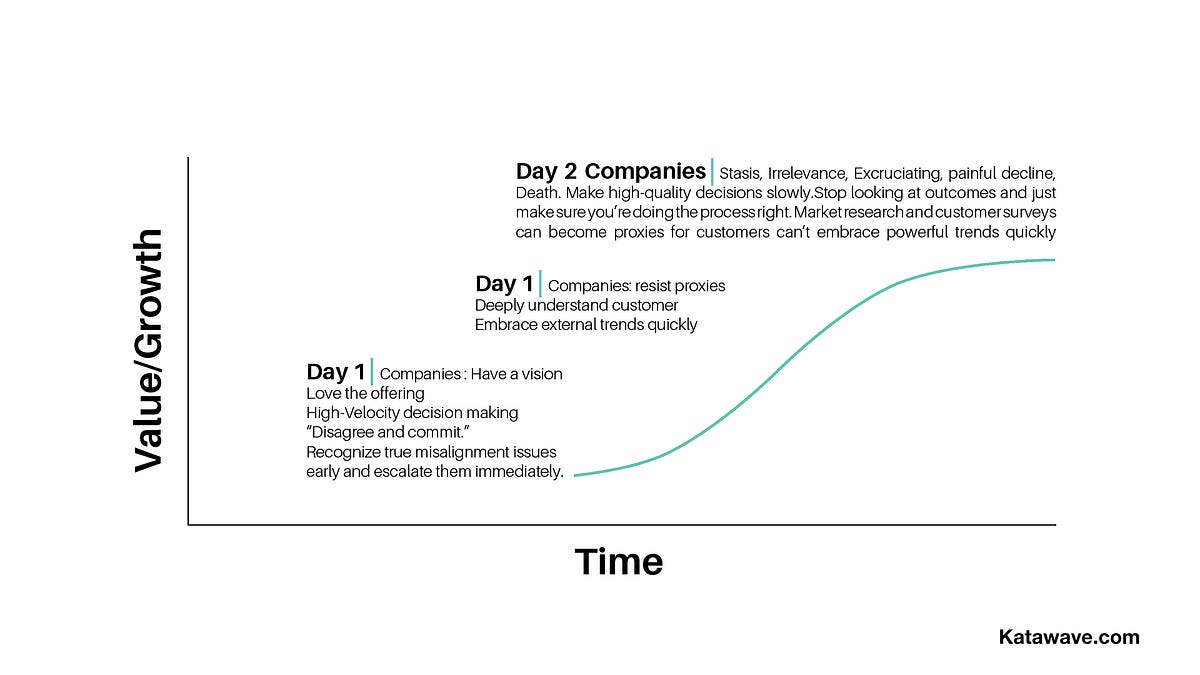
This is what we witnessed with Blockbuster, this is what is happening in so many companies today. Leadership resist rocking the boat and live in the short term.
Often it is a case of “killing” your former self or at least managing decline, while recalibrating for the future (and even present). The biggest difficulty as always is letting go of old ways of thinking, of status quo and of a sense of entitlement.
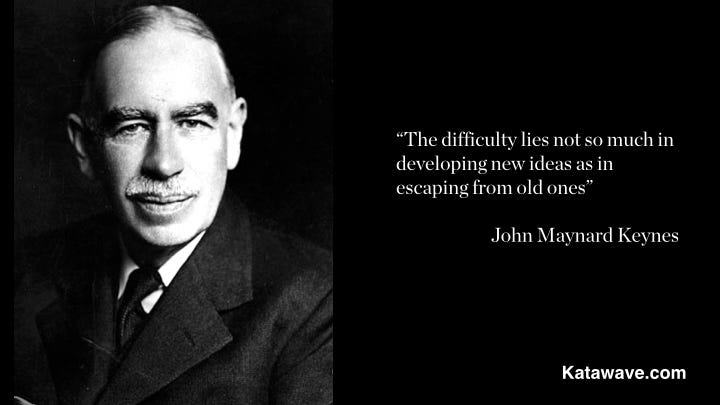
Letting go, also means letting go of old business models and often “killing” off existing revenue streams which are killing your business.
Technology is not to blame, like so many claim it is, technology has just enabled the birth of new business models and the demise of old ones.
Netflix did not kill Blockbuster. Ridiculous late fees and failing to acknowledge the next S curve jump “DID!”
Uber is not killing the taxi business. Poor taxi access, a lack of trust and failing to jump to the next S curve jump “IS?”
Amazon is not killing other retailers. Poor customer service, slow reactions to shifting human needs and failing to jump to the next S curve jump “WILL?”
Deeper Shifts
It goes deeper than this however, companies need to understand shifting human behaviours or as we obsess over in Katawave with our unique methodologies, the changing patterns of “People and Things”, where things are business models, products or services. It is not enough to understand each in isolation.
Amazon obsess over this. Driven by an obsession with customer satisfaction, Amazon embody the famous Wayne Gretzky quote, when asked how he was such a great (Hockey) player:
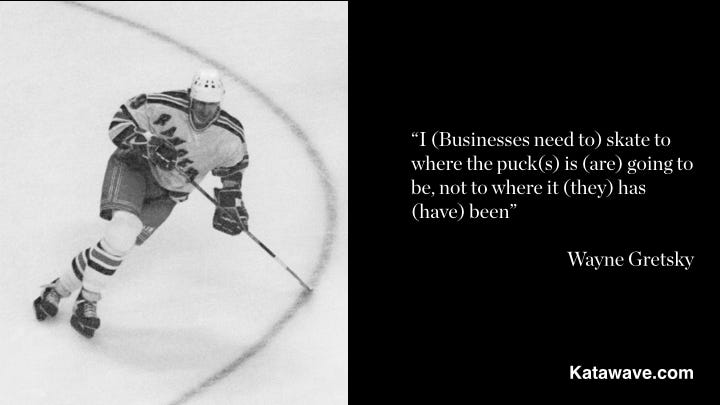
Amazon does this. Amazon recognises where the puck is going, because it lives in Day one and it consistently jumps the S curve with an overarching philosophy of customer service.
The Age of Experience
This is a forthcoming post (and a recent event we had in Katawave HQ). We live in an age where experience trumps services and services trump products. When your product or service is awesome enough and your product has an authentic story behind it you can jump the curve to experiences.
Think about the rise of coffee shops, of weekend breaks, of Carpe Diem. People do not want “stuff” anymore, neither the clutter nor the hassle of minding it.
Experience means more than the actual experience had, it means the eco-system around the experience. The customer service (this week’s innovation show features Chief Amazement Officer Shep Hyken and CEO of CloserIQ Jordan Wan) needs to be impeccable. The venue needs to be impeccable, as we will cover next week, the soundtrack of your brand needs to be impeccable.
This is why it is unfathomable why so many retailers (who are clearly struggling) still have staff who are not service minded, who clearly dislike customers, while you have brands like Sephora, who boast amazingly well-trained staff, who obsess over the customer and make the customer feel at home. As Chief Amazement Officer Shep Hyken says on this week’s innovation show, “Customer Service is a Philosophy, not a Department”.
“Customer Service is a Philosophy, not a Department” — Shep Hyken
This goes for airlines, hotels and restaurants. It was this notion that gave rise to the opening quote of this week’s Thursday Thought:
“The taste of the roast is often determined by the handshake of the host.” — Benjamin Franklin
Other Forces — Briefly
I mentioned several forces are at play, apart from experience another is the “Access Economy”. Possession is giving way to access, this is a very clear pattern. Think Uber, GoCar and MyTaxi, where people are preferring access to a car to owning a car (check out this innovation show with MyTaxi CEO Andrew Pinnington). As for Airbnb, many people would rather afford to be able to enjoy Paris and enjoy experiences there rather than spend their money on staying there.
Understanding these shifts helps you calibrate your business.
Amazon’s Understanding
Amazon caters for so many of the shifting patterns in the World.
Firstly, they obsess on the customer aiming to make an “ideal” customer experience. None of the hassle with minimum cost. Once, they have this perfected, they can add anything to their model. Hence, we see they have added Amazon Wardrobe, Amazon Pantry and hence why we see the Wholefoods acquistion.
Amazon has a huge amount of urban users, who are also Prime members. They maximise their Prime benefits. Wholefoods is also more urban, it is also “An Experience”, quality goods, in quality surroundings, served by service-minded staff. Amazon have not cracked grocery yet, this is a way to do so. As an aside, I can see Amazon Lockers in Wholefoods, driving footfall to the stores and ease of use for customers, I imagine there is a huge overlap in the consumer profile.
Meanwhile, let’s think how Amazon might start a new S curve for the rural market? Amazon has lowered Prime membership fees for lower income consumers. Thus, they are not deprived access? Yes, but also this means they enter other retailers turf, such as Walmart, who has a large rural customer base. Using Wholefoods know how and distribution, this will be an interesting battle field.
So, will Retail Toast or Roast?
So what will see in the future? Amazon more and more in stores, they realise customers need experiences (they just launched Amazon Prime Live Events by the way), we will see AI taking out cashiers in the name of lower prices and customer ease. So, while traditional retailers are are optimising stores, Amazon is fast tracking their future. We will see Amazon jump the S curve to drone delivery, self driving distribution and Amazon Air at some stage.
Stores need to have outstanding staff, like a concierge service. Removing any resistance. We are in the experience economy. When you frame your business in these real shifts in the world you make different decisions.
While most retailers are still grappling with e-commerce and digital transformation, Amazon are working in the future, while managing the present and waiting for the world to catch up.
Imagine that organisations even adopted a fraction of future orientated strategy. Most are driven by short-term goals, short-term thinking, but also short-term focus.
We are amidst an era of hyper-rapid change and constant disruption, of the Fortune 500 firms ranging from 1955 to 2015 only 12% remain and we are going to see a lot more sink in the coming years.
Innovation and long-term thinking is the only way forward. At Katawave we work with senior leaders to understand their uncertain future and jump their S curve. More posts like this here.